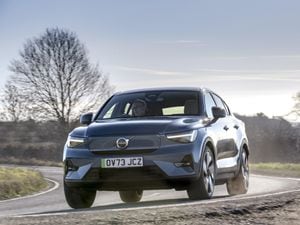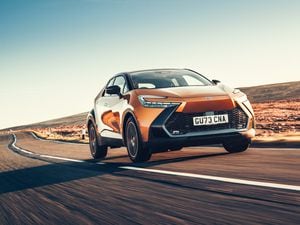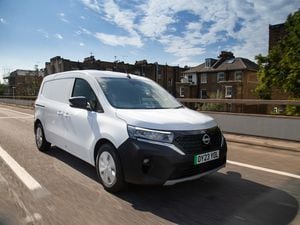UK Drive: The Optima PHEV is accomplished, but compromised overall
Kia’s first plug-in hybrid looks good on paper, but how does it stack up compared to the diesel-powered opposition? Tom Wiltshire finds out
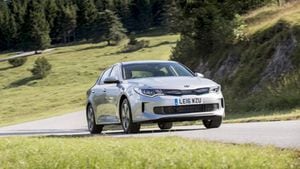
What is it?
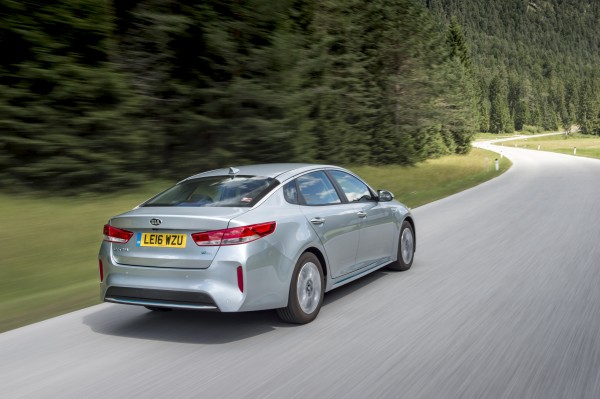
Kia’s electrified lineup is steadily increasing – as well as the Niro hybrid SUV, there’s also the Soul EV and this – the Optima plug-in hybrid. It’s based on the standard Optima, which is otherwise only available in diesel form, and can be had as a saloon or Sportswagon Estate.
In this guise, the Optima is powered by a combination of a 2.0-litre petrol engine and an electric motor. It’s capable of up to 33 miles on electricity alone, but can run as a standard hybrid if needed.
What’s new?
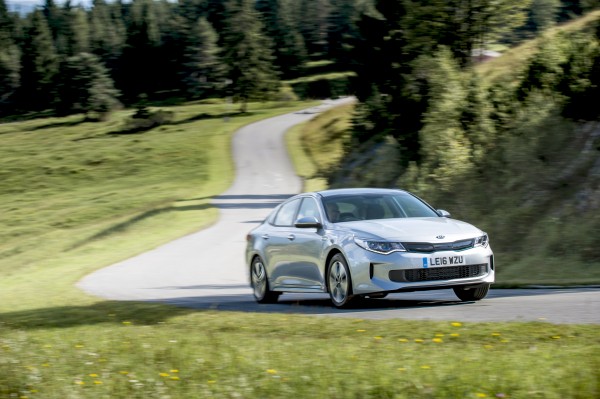
The PHEV is marked out from the standard Optima by a few subtle visual changes. The front grille has been filled in with a streamlined insert, which opens up as needed for engine cooling. There is also some subtle blue detailing around the front bumper.
“Eco Plug-in” badges adorn the sides, while our car was fitted with streamlined 17” alloy wheels to give a futuristic look. Inside, you’d never know this was a hybrid unless you noticed the updated gauge cluster and eco-specific buttons on the centre console.
What’s under the bonnet?
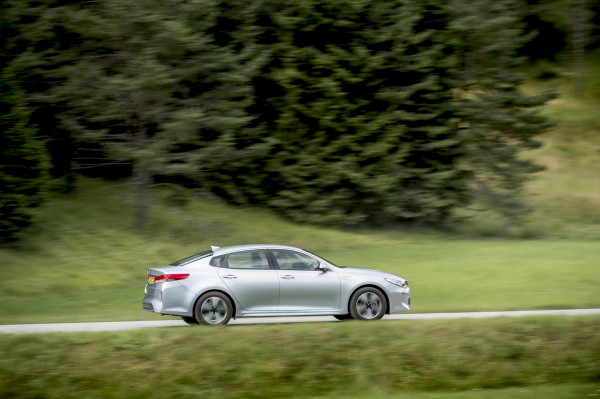
Under the Optima’s bonnet lies a 2.0-litre, naturally aspirated petrol engine coupled to an electric motor. Unusually, the whole combination is mated to a dual-clutch transmission – rather than a CVT, as in most hybrid vehicles.
With 202bhp on tap, the Optima PHEV has a fair amount of power, though acceleration is dulled by the car’s 1,800kg weight. It’s fairly rapid off the line, though, owing that to the instant torque provided by the electric motor.
The transition between electricity and petrol can be choppy if the car is pushed, leaving you lagging when trying to pull away smartly from a junction or roundabout. The engine can be breathless at higher speeds, too – the Optima’s acceleration is at its best up to 40mph, at which point it tails off sharply.
If fully charged, Kia claims an all-electric range of 33 miles, up to a maximum speed of 75mph.
What’s it like to drive?
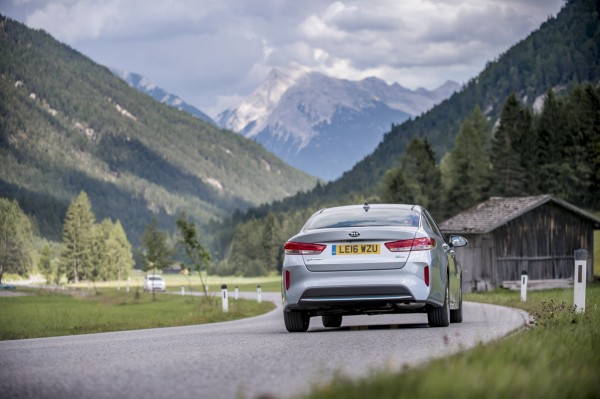
The Optima is a totally different experience from a diesel saloon of this size. The silent drivetrain is eerie, especially round town, and the instant punch from the electric motor is very satisfying.
However, that extra battery capacity comes at a severe weight penalty. The Optima PHEV is a full 200kg heavier than its diesel counterpart, and you can really feel that in the corners. Twisting roads are best taken at a sedate pace, or the skinny low-rolling-resistance tyres begin to protest – and the light steering is totally devoid of feel.
It’s pleasingly direct, though, and the Optima feels smaller than its size would suggest. It’s a great long-distance cruiser, too, with wind noise the only complaint. However, the hybrid drivetrain doesn’t lend itself to motorway economy – you’ll average higher mpg by opting for a diesel if you regularly drive long distances.
How does it look?
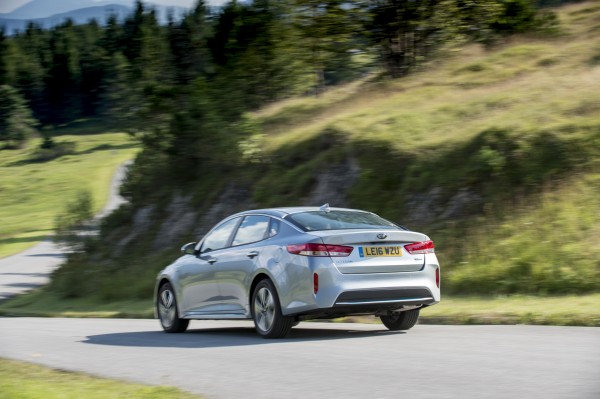
‘Our’ test car was decked out in a look we like to call ‘London Minicab’ – black exterior paint, eco-friendly wheel trims and a cloth interior. But opt for a better colour – we like ‘Gravity Blue’ – and the Optima is a genuinely handsome car, with strong lines and a sharp grille that instantly marks it out as a Kia.
The rear is less successful, but it’s certainly more interesting than the Volkswagen Passat – plus LED lights front and rear give it a modern look in the dark.
It might surprise you that such a subtly goodlooking car could come from Kia, but the brand’s chief stylist since 2006 has been Peter Schreyer – the man credited with designing the influential Audi TT.
Despite Kia’s rebirth, the badge doesn’t have the kudos of a VW one, though it won’t attract ridicule as it may have in days gone by.
What’s it like inside?
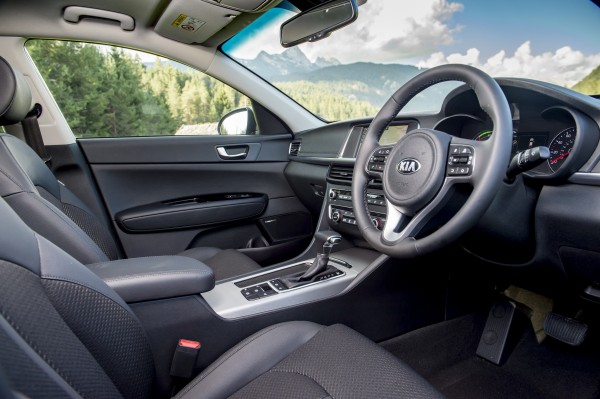
The interior suffers from a deficit of light – relatively narrow windows and no glass roof contribute, but the real culprit is the colour scheme of black on black on more black.
Adjust your eyes, though and the Optima’s interior is equally successful as the interior – it’s reasonably stylish, very well built and effortless to navigate your way around. However, the Optima’s sophisticated drivetrain pushes up the price of the car, to a point where the standard model’s interior feels somewhat lacking. Compared to a similarly priced diesel BMW or Mercedes, the Optima’s interior can feel cheap and plasticky.
It’s incredibly roomy for rear seat passengers – a six foot passenger can luxuriate behind a six foot driver – but the boot suffers drastically from the hybrid conversion. The battery pack eats into space, leaving only 307 litres available for luggage – and you can’t fold down the rear seats for longer items. Those who need the extra carrying capacity should opt for the Sportswagon estate.
What’s the spec like?
For a Kia, the Optima PHEV is very pricey – but the brand has compensated by chucking a large amount of equipment at it. LED lights front and rear come standard, improving the looks and the rear visibility.
Inside, the cloth upholstery is bolstered by faux leather additions, while the front seats and steering wheel are also heated. All-round electric windows and climate control keep things at the right temperature, and the eight-inch infotainment display offers everything you could reasonably expect – including DAB radio, sat-nav, and the crucial Apple CarPlay and Android Auto.
Verdict
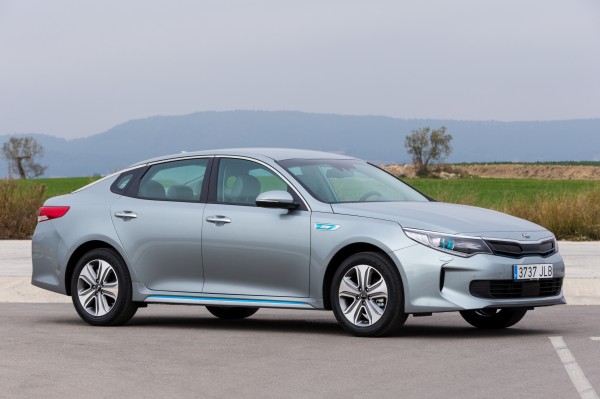
Opting for a hybrid no longer means you need to settle for odd styling, a compromised driving experience and a lack of long-distance comfort. The Optima is handsome, not bad to drive and very comfortable, and were it not for the limited boot space it would be an ideal family car.
Keen drivers need not apply, as the choppy powertrain and lifeless handling spoil the fun, but the payoff is the potential for rock-bottom running costs. If your lifestyle supports it, the Kia could cost virtually pennies to run – but with the versatility that a pure electric vehicle can’t offer.
Facts at a glance
Model as tested: Kia Optima 2.0 GDi PHEV Auto
Price: £33,995
Engine: 2.0-litre petrol with electric motor
Power: 202bhp
Torque: 375Nm
Max speed: 119mph
0-60mph: 9.1 seconds
MPG: 176.6mpg
Emissions: 37g/km CO2
By Tom Wiltshire


